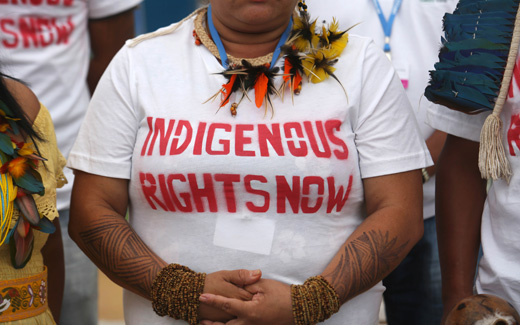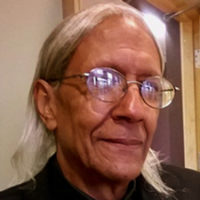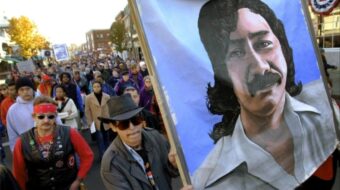
One of the bright spots on the American Indian horizon is the action taken by the Colorado River Indian tribes (CRIT). The Tribes as of late have been turning the tables of history and evicting latter-day white settlers, mostly residential tenants, from reservation land.
These evictions have recently been ruled legal by a U.S, federal court, confirming the long held claims of CRIT that the land in question is part of the reservation established 150 years ago. The reservation sprawls across the Arizona/California border and encompasses 245,000 acres. It has the distinction of being the first reservation established in Arizona. The huge Colorado River courses through CRIT land.
Having lived and worked on that reservation as a tribal public defender for CRIT, I am familiar with the history of the area and the issues involved. The Tribes lease land to non-Indian lessees, commercial and residential, many under 99 year leases. These tenants for the most part recognize the tribal ownership of the land and fulfill their rental obligations. But, within the western boundary of the reservation, there have long been white residents who do not recognize tribal ownership and harbor flagrant, racist anti-Indian attitudes which they frequently express, particularly in the media.
The reservation is the ancient homeland of the Mohave people, whose ancestral lands stretched far beyond the current reservation, even encompassing parts of northern Mexico. The reservation is just a fraction of their original vast territory. In ancient times the Mohave population numbered in the tens of thousands. The current tribal population is between 2,000 and 4,000.
CRIT now includes not just Mohaves, but three other distinct tribal peoples: the Chemehuevi, Navajo and Hopi. The Chemehuevi are ancient residents of the area and some Hopi and Navajo families were settled at CRIT after World War II. Presently, all four tribal peoples comprise CRIT with representatives on the tribal council and are also represented on the tribal seal and at tribally sponsored events.
The area is much desired as a recreational haven by tourists from near and far, because of the river. Many non-Indians flock to reservation for fun and profit.
What is so infuriating to this writer is that some white people insist on taking what little land is left to Native Americans. Any map of reservation land in the U.S. will show Indian holdings looking like pepper specks on a sheet of typing paper, but for some whites this still is not enough. They still want it all; as far they are concerned Native holdings should apparently register at zero. The hackneyed excuse they give for their insatiable greed is that Native people never developed the land, while the Euro-Americans make something out of the land (I maintain that this is not an improvement, that is why all of us are looking down the barrel of a global warming shotgun, threatening the existence of all humanity). This so-called development argument goes back to the days of the pioneers who with such alacrity sought the genocide of all Indian people. This was also an argument advanced by Teddy Roosevelt to justify the dispossession of American Indians.
The holdouts have long been trespassers on tribal land. One example of this from the California portion of the reservation is that a group of them had created what tribal officials called “anti-Indian zones” – pockets of racism in an area north of Blythe, California. The land there is subdivided into 250 lots. Tribal leaders rarely traveled in those areas without Riverside County sheriff’s officers. Racism runs rampant among these white miscreants, as evinced by the statement of one trespasser who stated: “The Indians have been eating too much of that peyote lately.” (This a racist referral to the religious practices of the Native American Church.)
The focal point of one standoff was with a trespasser, Roger French, who was evicted in 2011 after refusing to pay tribal rent for 17 years. The eviction was upheld in CRIT tribal court and French was ordered to pay $250,000 in back rent, legal expenses and interest. With support from California Jerry Brown and the state Attorney General Kamala Harris, French fought back with a federal court case that the Tribes viewed as an attack on their tribal sovereignty, courts and government.
French contended that the land on which he resided had never been part of the reservation. The basis of his claim was that the reservation boundary was riparian- moving with the river as it periodically changes course. This would exclude land on the California side.
The tribal boundary is based on a determination issued in 1969 by then-Interior Secretary Stewart Udall that the reservation’s western boundary was established in 1876 and would remain the same to prevent the loss of any land due to any change in the river channel.
Subsequently, lease permits were approved for the west bank of the river. In the early 1990’s the Tribes began raising rental rates, at which many lessees balked and began raising specious claims. They asserted that the boundary set by Udall was not a final determination. They refused to meet their rental obligations and thus began the decades-long struggle to evict the settlers.
The attempted chicanery on the part of French is shown by the fact that he voluntarily signed his lease with CRIT in 1983. The lease described the land as being reservation boundaries and identified CRIT as the “permitter” -meaning the lessor. Tribal members wish the holdouts were understanding of the long history of oppression suffered by Native Americans for centuries, instead of trying to add to the record of racist injustice and bitter torment.
On the other hand, all praises to CRIT for the recovery of tribal lands from racist land robbers. May other tribes follow suit!
Photo: AP












Comments